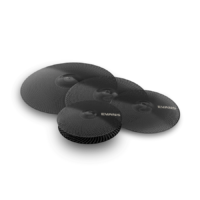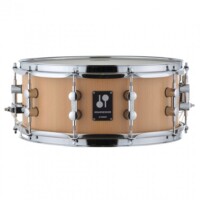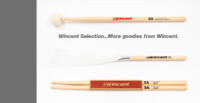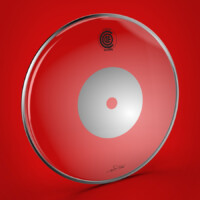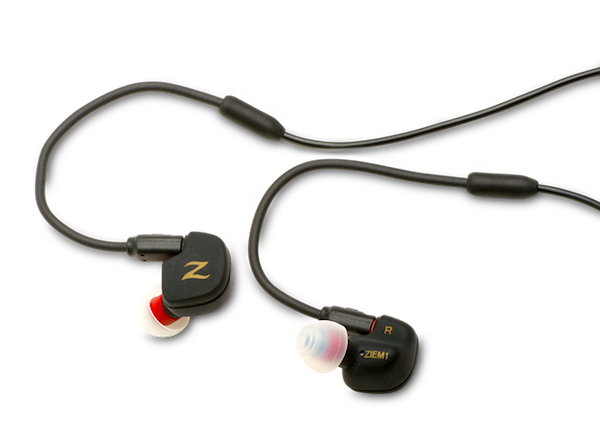 So a couple of updates ago I looked at some new arrivals for 2020 from Zildjian. The one remaining item from those new 2020 pieces were these, Zildjian’s new In Ear Monitors.
So a couple of updates ago I looked at some new arrivals for 2020 from Zildjian. The one remaining item from those new 2020 pieces were these, Zildjian’s new In Ear Monitors.
Zildjian says that these monitors are designed to deliver high quality sound for musicians on stage, in the studio, or practice. They are built with what the company calls a Dual Dynamic Driver which is intended to provide a smooth frequency response.
In ear monitor reviews are a little more difficult to do because, more than most items I get to look at, any opinion I express is completely based on my own personal hearing and interpretation of that.
Physically, the monitors look great (with the Zildjian ‘Z’ logo on each one) and are very practical – the flexible cable is of a good useable length if you’re going to use them with an iPod/phone/etc or belt pack, and you also get a 1/4” adapter, cleaning tool and carrying case. The monitors come with soft silicone tips as standard.
In use, for me, these IEMs were comfortable in my ears and I didn’t notice any obvious discomfort through use. The standard silicone tips provided a decent enough seal for me and each monitor fitted into my ear without any issues.
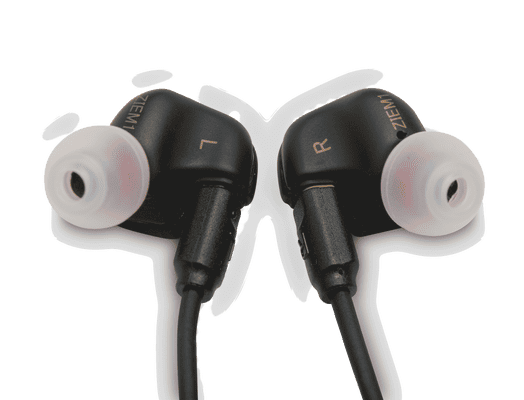 Sound-wise, I tried the IEMs by using them behind my own kit whilst playing, listening to recordings of my own drums through my own recording gear (so I had a default position of knowing what it ‘should’ sound like to me), watching HQ Youtube drum recordings, some rock music and some EDM as well in order to try and get a few different musical contexts in.
Sound-wise, I tried the IEMs by using them behind my own kit whilst playing, listening to recordings of my own drums through my own recording gear (so I had a default position of knowing what it ‘should’ sound like to me), watching HQ Youtube drum recordings, some rock music and some EDM as well in order to try and get a few different musical contexts in.
The sound quality I found to be clear. The monitors could handle the low end, and the high end was present without being harsh, but for my ears there was a hint of mid range muddiness in use.
Since everyone’s hearing is different, and obviously so are everyone’s preferences too, the ‘default’ position of these monitors for some may actually work out quite well, especially depending on such things as your age (the younger you are the more high end you can hear), the amount you have been exposed to loud volume (loud music over time leads to lack of sensitivity), your music style and so on, so these may be perfect for you ears.
The muddiness I was hearing could quite easily be EQ’d out with little effort so it’s a case of the designers having to default the response to a baseline, and then me as the end user having an easy way to personalise it.
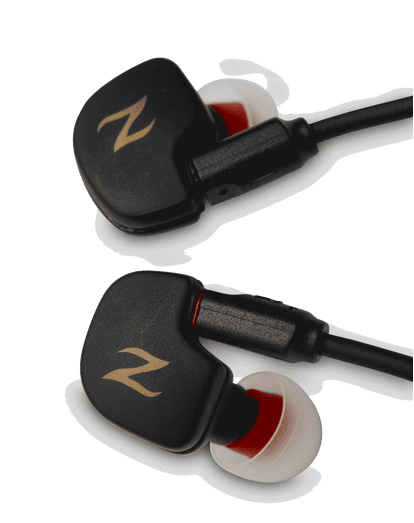 In the past I have found that non-moulded IEMs have a tendency to sometimes work their way out of the ear through movement, and – as far as I can see – that just comes with the territory. I didn’t find these IEMs to be any different in this respect.
In the past I have found that non-moulded IEMs have a tendency to sometimes work their way out of the ear through movement, and – as far as I can see – that just comes with the territory. I didn’t find these IEMs to be any different in this respect.
My experience of these IEMs was fine, but I don’t know if I would honestly call them ‘pro’.
The sound quality was certainly good enough and if you’re just starting out with IEMs, or want something to use for home practice, then these might well be a good starting point for you.
On a comparative scale, if you’re used to higher end audio, they won’t necessarily blow your mind with the sound quality. Taking into account that high end IEMs can have up to ten drivers per monitor, you will therefore get a much more rounded sonic picture with such, albeit you pay for that too (and you could easily pay twenty times what the Zildjian’s cost for top of the range IEM). On that basis, yes, you would notice the difference. All that said though, what they are in my view is very useable, comfortable and reasonably priced too, and if you have more expensive IEM already, these would be great as a back up in your stick bag.
More info at https://zildjian.com/merch/accessories/other-accessories/professional-in-ear-monitors.html and a short video by Stephen Taylor – https://www.youtube.com/watch?v=jRt-0x3dEwo
David Bateman
May 2020

